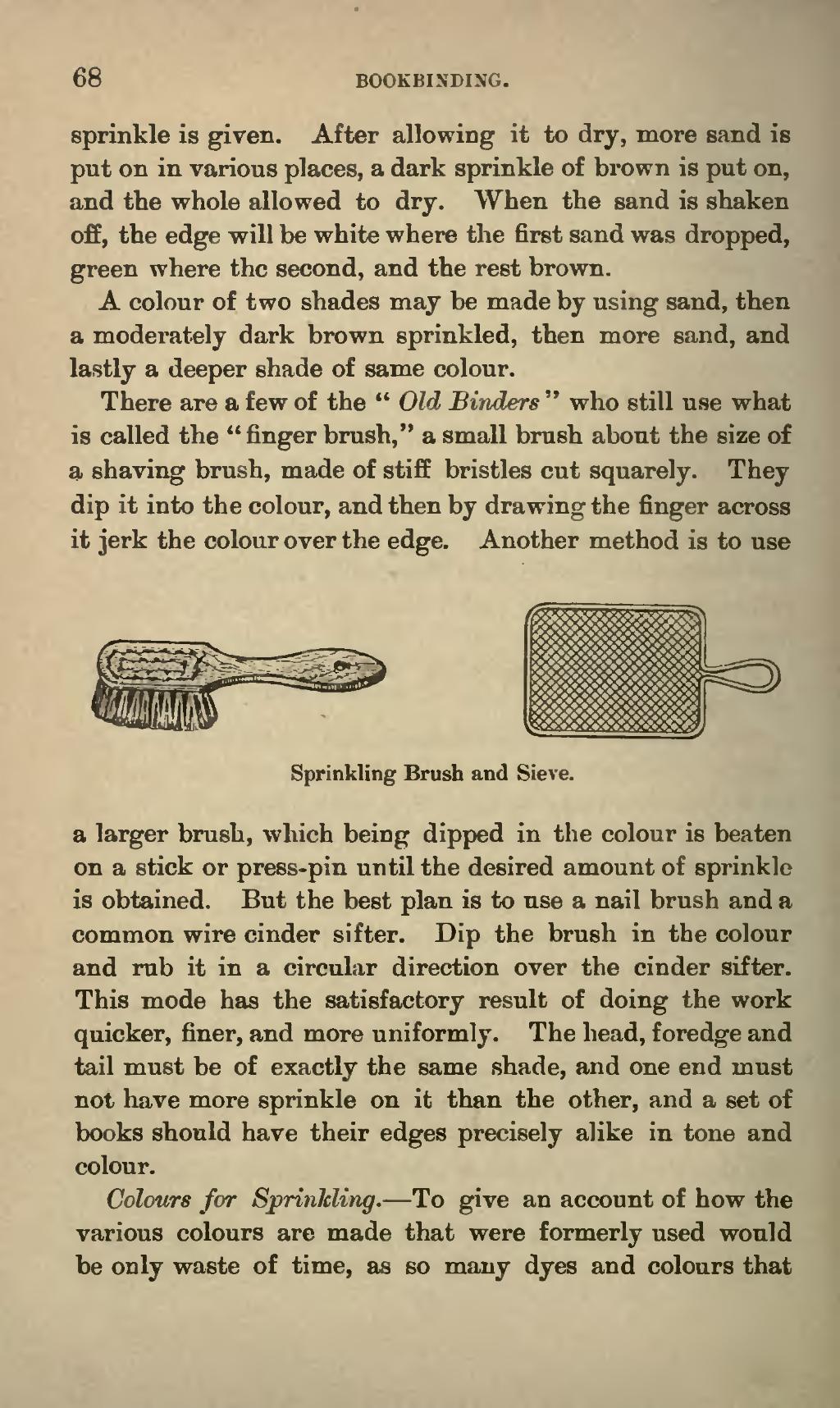sprinkle is given. After allowing it to dry, more sand is put on in various places, a dark sprinkle of brown is put on, and the whole allowed to dry. When the sand is shaken off, the edge will be white where the first sand was dropped, green where the second, and the rest brown.
A colour of two shades may be made by using sand, then a moderately dark brown sprinkled, then more sand, and lastly a deeper shade of same colour.

|

|
| Sprinkling Brush and Sieve. | |
There are a few of the "Old Binders" who still use what is called the "finger brush," a small brush about the size of a shaving brush, made of stiff bristles cut squarely. They dip it into the colour, and then by drawing the finger across it jerk the colour over the edge. Another method is to use a larger brush, which being dipped in the colour is beaten on a stick or press-pin until the desired amount of sprinkle is obtained. But the best plan is to use a nail brush and a common wire cinder sifter. Dip the brush in the colour and rub it in a circular direction over the cinder sifter. This mode has the satisfactory result of doing the work quicker, finer, and more uniformly. The head, foredge and tail must be of exactly the same shade, and one end must not have more sprinkle on it than the other, and a set of books should have their edges precisely alike in tone and colour.
Colours for Sprinkling.—To give an account of how the various colours are made that were formerly used would be only waste of time, as so many dyes and colours that

